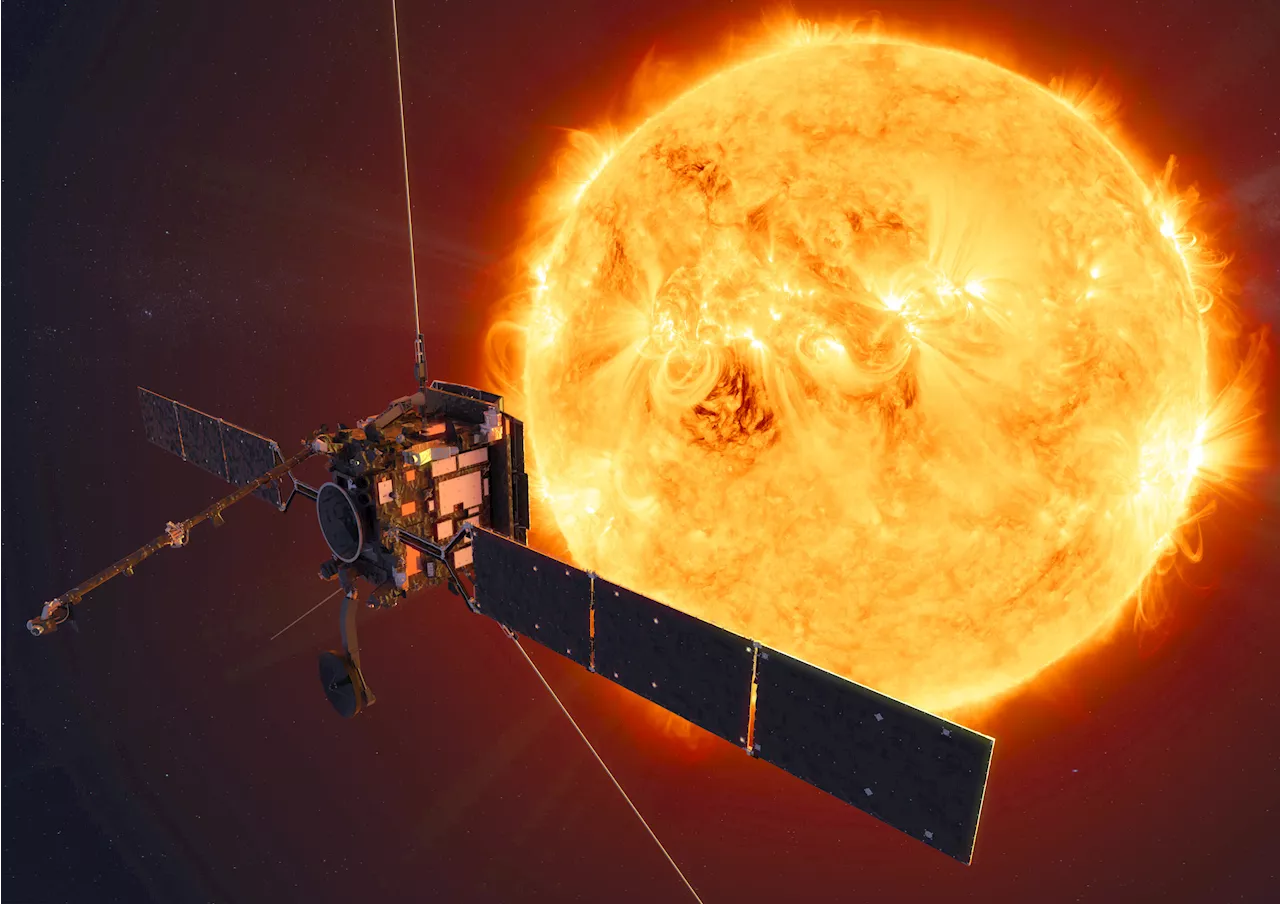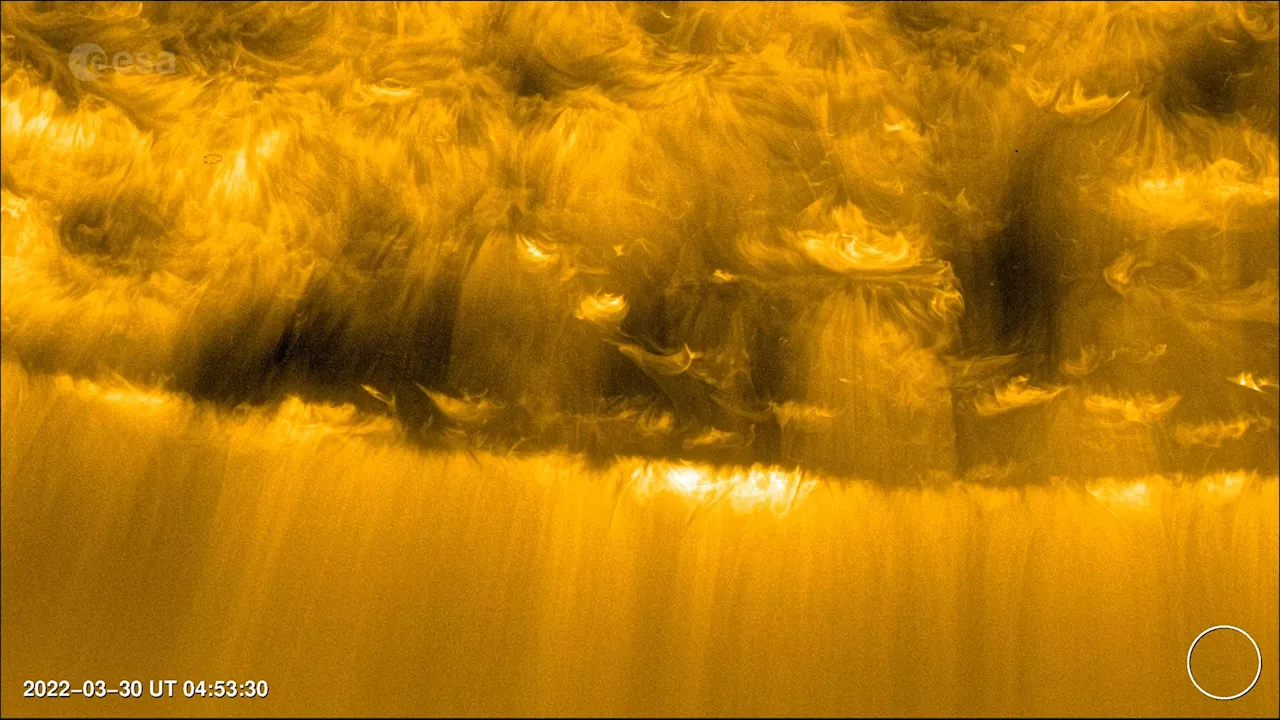Sharmila Kuthunur is a Seattle-based science journalist covering astronomy, astrophysics and space exploration. Follow her on X @skuthunur.
has, for the first time, traced the solar wind in space to a specific location on our sun's surface, opening a new way to study the origins of solar winds, scientists reported on Tuesday ."Solar wind" refers to pockets of charged particles blasted from our sun, which are sometimes directed toward Earth. A rare cluster of such storms sparked breathtaking auroras around the world earlier this month, which were likelyin the past 500 years.
Yet, despite decades of research, details about the origins of the solar wind remain murky. Scientists have suspected the streams of charged particles carry unique identifiers about regions on the sun they emerge from, but those"footprints" are often smeared out by the time they reachOne of the main goals of Solar Orbiter was to help scientists find those footprints and use them to trace the solar wind to specific regions on the's surface.
When the probe glided inside the orbit of Mercury in March 2022 during its first close approach to the sun, it cataloged the chemical makeup of solar wind streams it encountered. This chemical composition is known to differ depending on where the stream emerged from, and helped scientists trace a type of slower-moving solar wind, which travels less than 310 miles per second , to its source on the sun.
"We saw a lot of complexity that we could tie back to the source regions," study lead author Stephanie Yardley of Northumbria University in the U.K. said in the statement.More specifically, from the probe's images of the sun's surface, scientists could pinpoint streams of slow wind blasted from regions on the sun where two kinds of magnetic field lines met: open, which are anchored to the sun on one end, and closed, which are the bright loops rooted on both ends.
"The instrument teams spent more than a decade designing, building and preparing their sensors for launch, as well as planning how best to operate them in a coordinated way," study co-author Christopher Owen of the University College London said in a."So it is highly gratifying to now see the data being put together to reveal which regions of the Sun are driving the slow solar wind and its variability.
United States Latest News, United States Headlines
Similar News:You can also read news stories similar to this one that we have collected from other news sources.
 Mystery of 'slow' solar wind unveiled by Solar Orbiter missionScientists have come a step closer to identifying the mysterious origins of the 'slow' solar wind, using data collected during the Solar Orbiter spacecraft's first close journey to the sun.
Mystery of 'slow' solar wind unveiled by Solar Orbiter missionScientists have come a step closer to identifying the mysterious origins of the 'slow' solar wind, using data collected during the Solar Orbiter spacecraft's first close journey to the sun.
Read more »
 “Slow” Solar Wind: Mysterious Origins Unmasked by Solar OrbiterScience, Space and Technology News 2024
“Slow” Solar Wind: Mysterious Origins Unmasked by Solar OrbiterScience, Space and Technology News 2024
Read more »
 Mystery of 'slow' solar wind unveiled by Solar Orbiter missionScientists have come a step closer to identifying the mysterious origins of the 'slow' solar wind, using data collected during the Solar Orbiter spacecraft's first close journey to the Sun.
Mystery of 'slow' solar wind unveiled by Solar Orbiter missionScientists have come a step closer to identifying the mysterious origins of the 'slow' solar wind, using data collected during the Solar Orbiter spacecraft's first close journey to the Sun.
Read more »
 Solar Orbiter Takes a Mind-Boggling Video of the SunSpace and astronomy news
Solar Orbiter Takes a Mind-Boggling Video of the SunSpace and astronomy news
Read more »
 Solar Orbiter Video Captures Sun's Fluffy Plasma Structures in Mesmerizing DetailThe Best in Science News and Amazing Breakthroughs
Solar Orbiter Video Captures Sun's Fluffy Plasma Structures in Mesmerizing DetailThe Best in Science News and Amazing Breakthroughs
Read more »
 Solar orbiter takes a mind-boggling video of the sunYou've seen the sun, but you've never seen the sun like this. This single frame from a video captured by ESA's Solar Orbiter mission shows the sun looking very fluffy! You can see feathery, hair-like structures made of plasma following magnetic field lines in the sun's lower atmosphere as it transitions into the much hotter outer corona.
Solar orbiter takes a mind-boggling video of the sunYou've seen the sun, but you've never seen the sun like this. This single frame from a video captured by ESA's Solar Orbiter mission shows the sun looking very fluffy! You can see feathery, hair-like structures made of plasma following magnetic field lines in the sun's lower atmosphere as it transitions into the much hotter outer corona.
Read more »
